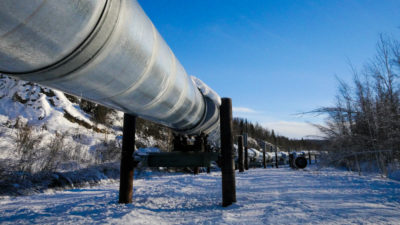On the surface, Suncor Energy Inc. (TSX:SU)(NYSE:SU) and Crescent Point Energy Corp. (TSX:CPG)(NYSE:CPG) seem like very different energy companies. Suncor is a large, integrated oil sands producer with refining and retail assets, whereas Crescent Point is a conventional light and medium crude producer focused on growth through acquisitions.
Although these are two different approaches to energy production, the companies both share one major strategic similarity—they both have highly effective risk management measures in place and this allows both companies to protect their cash flows in weak oil market conditions.
Both companies approach risk management differently, with Crescent Point pursuing an active hedging program, and Suncor benefiting from the natural hedge provided by its refining segment. Let’s take a look at each of these companies and see how they work to protect cash flows.
Crescent Point manages risk through a conservative hedging program
As most Canadian energy investors know, one of the main attractions to Crescent Point’s stock by both retail and institutional investors is its TSX-leading 9.25% yield. Crescent Point knows this, and as a result, they have implemented one of the most conservative hedging programs in the industry, with the sixth-largest percentage of production hedged out of a 27-company peer group.
Currently, Crescent Point has 56% of their 2015 oil production hedged, 33% of their 2016 production hedged, and 9% of their 2017 production hedged. For 2015, production is hedged at a very attractive $89/bbl, which means that the majority of Crescent Point’s production will be effectively sold at prices 79% higher than current WTI prices.
This approach has been effective so far. In 2014 Crescent Point’s hedging contracts gained $880.3 million, which brought total cash flow from operations to $2.4 billion compared to the $2 billion earned in 2013. Had Crescent Point been unhedged, not only would they have noted a 24% decline in cash flow from operations year over year, but their dividend would be at significant risk.
Crescent Point paid out $834 million in cash dividends in 2014. With $2.1 billion in capital expenditures and only $1.5 billion in cash flow (assuming no hedges were in place), Crescent Point would need to borrow or issue significant equity to fund both its capital expenditures and its dividend. This would likely be unsustainable.
Suncor manages risk through its refining assets
Unlike Crescent Point, Suncor has no hedges in place largely because it doesn’t need them. Suncor’s four refineries act as a built in hedge, as declines in oil prices also mean a reduction in feedstock costs for refineries. Refined products, such as gasoline and diesel, typically lag behind crude prices in a declining market environment, since the gasoline being sold was produced when crude was purchased in higher price conditions. This provides refiners with the opportunity to earn an increased “crack spread” (the difference between crude and refined product prices) when crude prices fall.
Unfortunately for Suncor, this did not happen in Q4 2014. This is because even as prices for both WTI and Brent crude fell, the differential between them declined. That is to say, North American-based WTI prices actually rose relative to international Brent prices because increased pipeline capacity allowed more WTI crude to make it to the Gulf Coast.
Since Suncor’s refineries largely purchase cheap inland WTI crude and sell refined products based off global Brent prices, the declining spread meant declining margins. Fortunately, this is about to change.
The WTI-Brent differential has been expanding steadily since January as U.S. oil production continues to climb and storage levels reach record capacity. In addition, gasoline prices should climb relative to Brent as seasonal demand increases and as lower gas prices encourage more driving.
Even more optimistic is the fact that Suncor will be transitioning its Montreal refinery to a 100% inland crude diet (it currently relies on more expensive Brent crude as an input). This will allow the Montreal refinery to capture the widening Brent-WTI differential as well, allowing Suncor to profit from weak oil prices.







